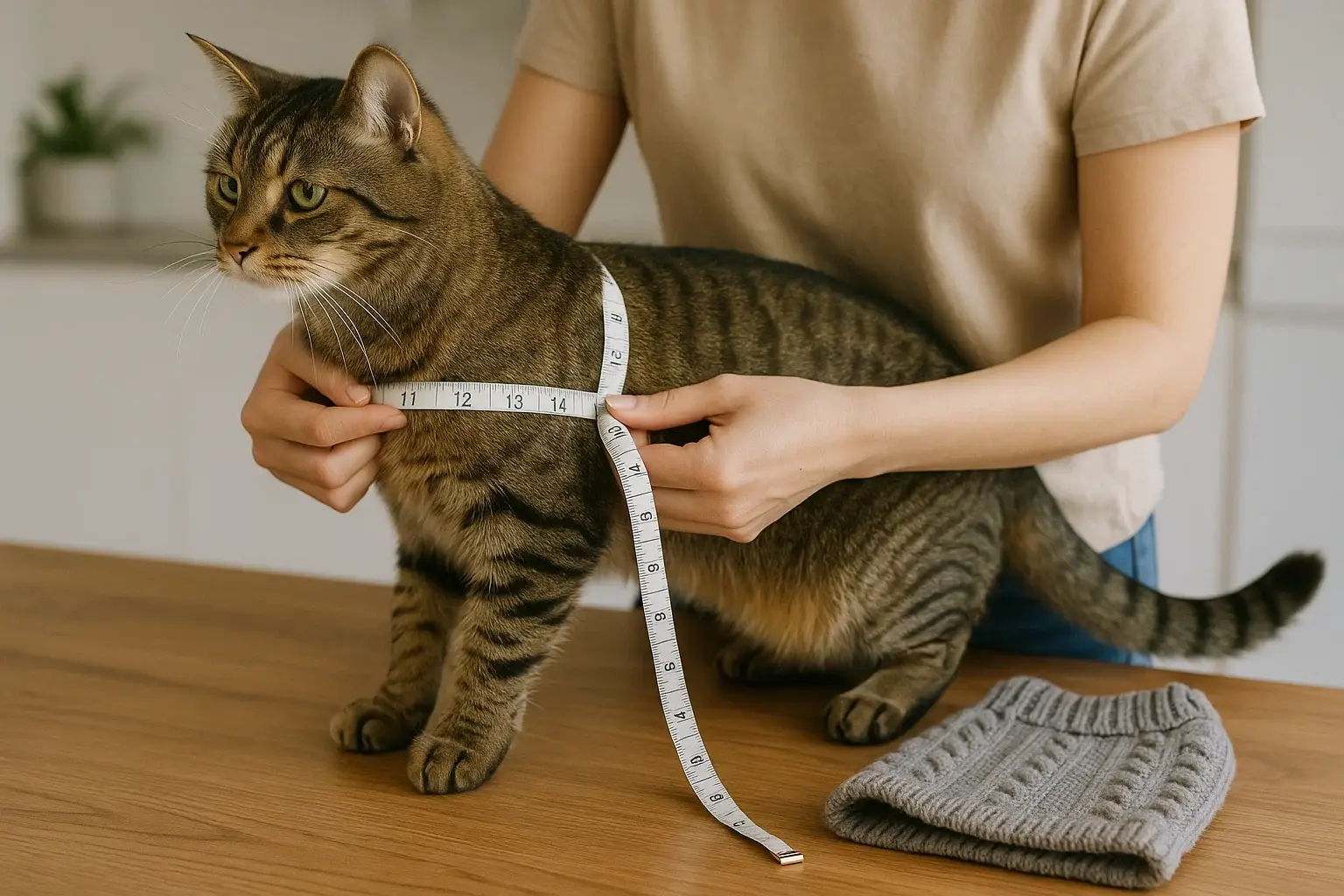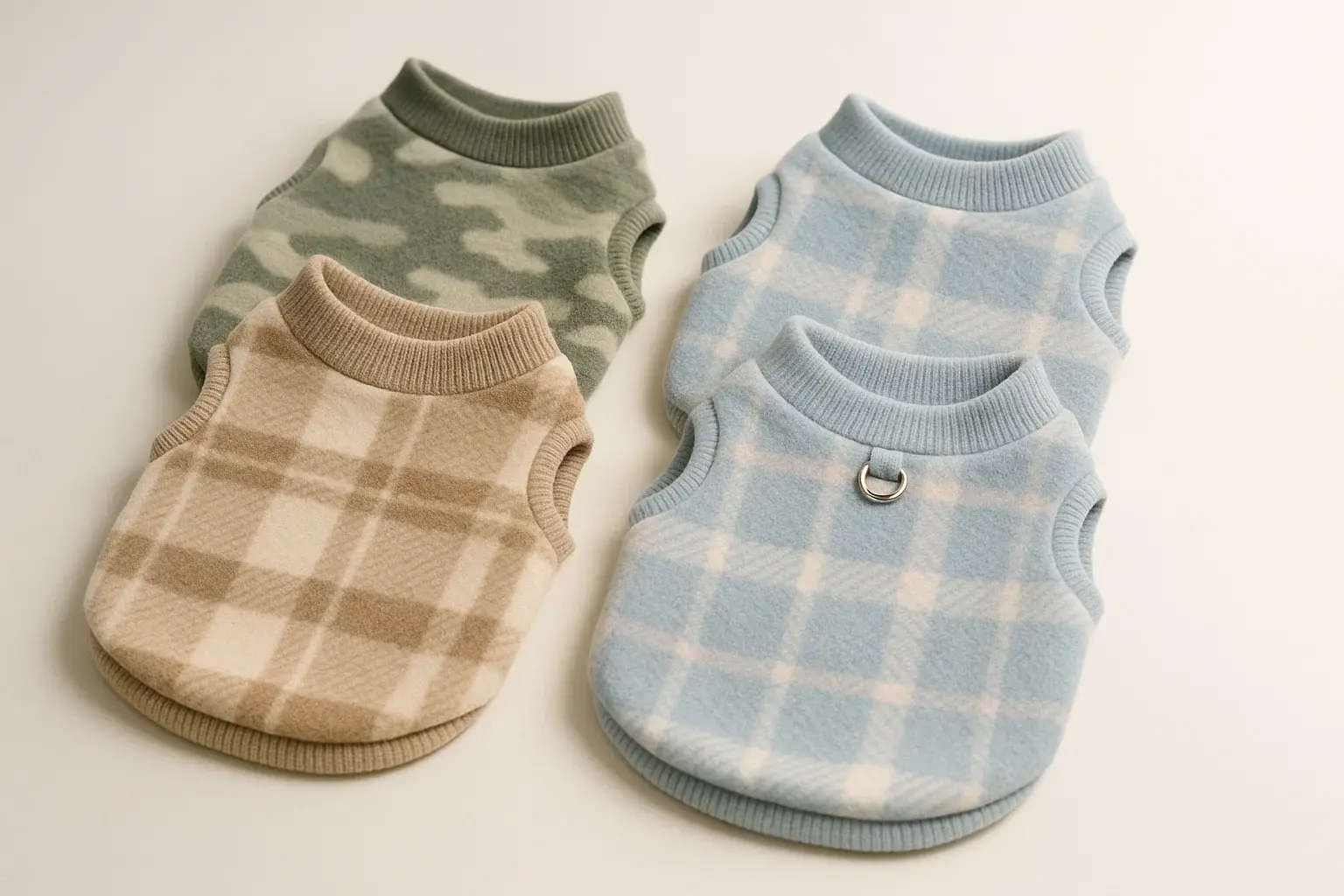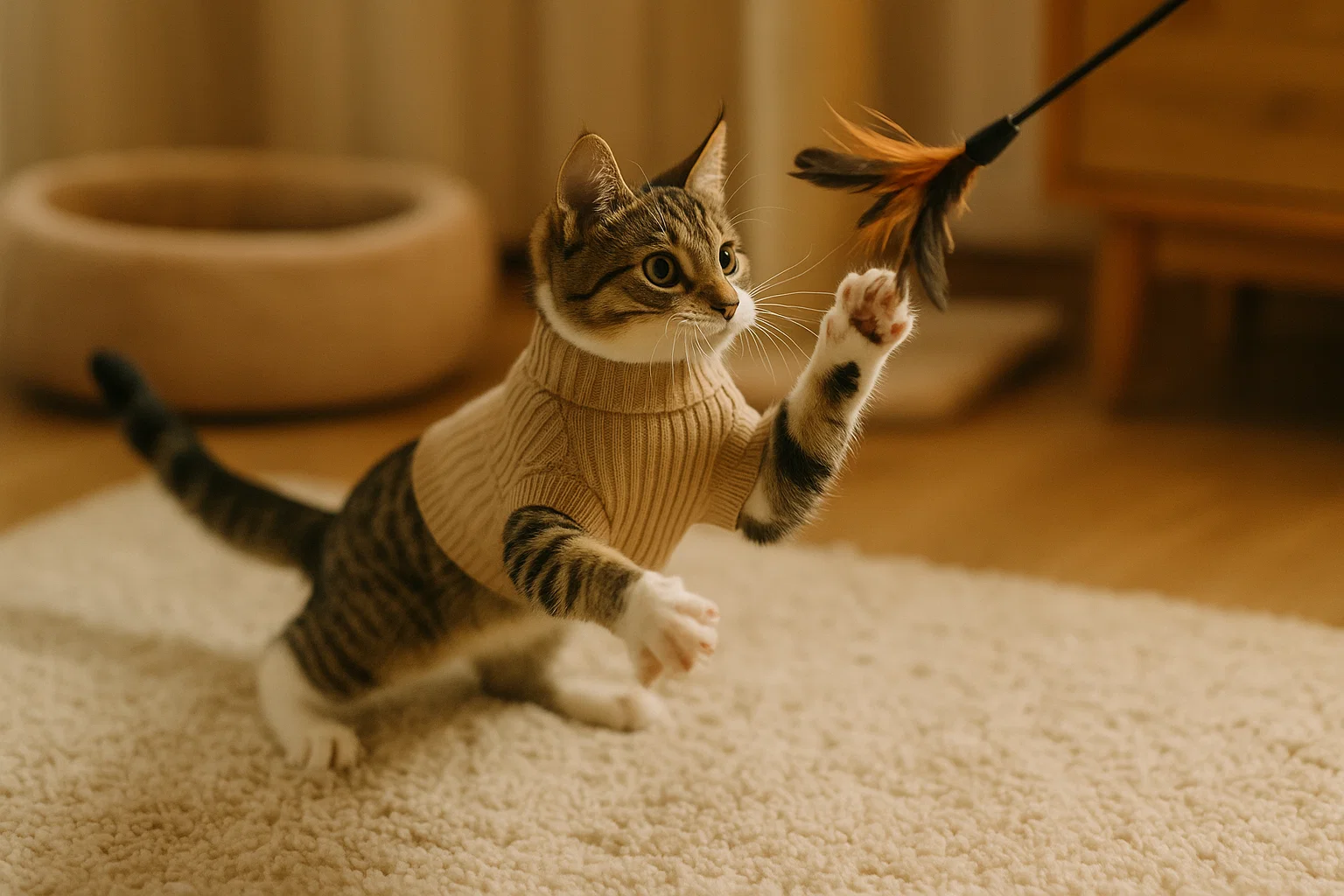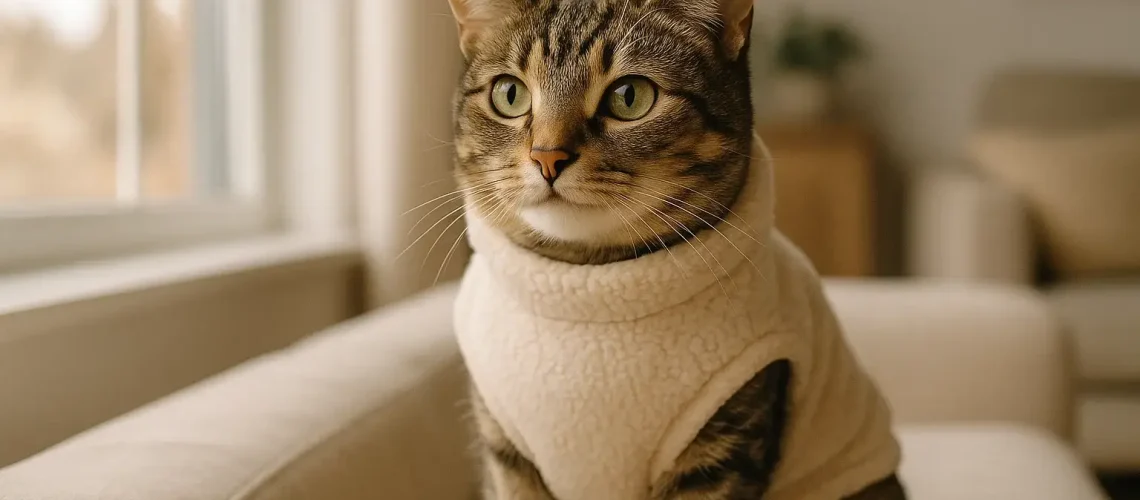Cat Sweater Guide: Keep Your Kitty Cozy, Safe & Stylish
Ever watched your cat curl into a tight ball, shivering near a drafty window, and wondered if a cat sweater would help? Many cat parents love the idea of a cozy, dressed-up kitty but worry about safety, comfort, and whether their cat will even tolerate clothes. The truth sits somewhere between “cute outfit” and “essential layer,” especially for small, short-haired, or senior cats.
At PupzCorner, we blend expert-backed pet care advice with carefully curated products so you can choose a sweater that is more than a photo prop. Our goal is to help you keep your cat warm, relaxed, and safe, while giving you confident choices about what to put on their body.
In this guide, you will learn when a sweater on cat is actually helpful, how to choose the right fit and fabric, and why our featured PupzCorner sweater set can be a smart, flexible option for small cats and kittens.
How to Choose the Perfect Cat Sweater
A good cat sweater should feel like a soft, gentle hug, not a stiff costume. Focus on three things: fit, fabric, and design details. When these are right, your cat is far more likely to accept wearing it for short, supervised periods.
Getting the Right Fit
Fit is non-negotiable. A sweater that is too tight can pinch under the front legs and around the neck. One that is too loose can twist, slip, or get caught on furniture. Measure your cat’s neck, chest, and back length before buying.
Look for designs that have a bit of stretch and a simple vest or pullover style. This allows your cat to walk, jump, and groom comfortably. A well-fitted cat in sweater should still be able to move its shoulders freely and sit or lie down in natural positions.
Expert Tip: If your cat cannot move normally, the sweater does not fit, no matter how cute it looks.
Best Materials For Comfort
Fabric matters as much as sizing. Soft fleece and knit materials are usually best for a cat sweater because they are warm yet lightweight. Avoid anything very heavy, stiff, or scratchy that could irritate the skin.
Breathable, slightly stretchy fabrics help prevent overheating and make dressing easier. For sensitive cats, choosing a smooth inner surface reduces friction on the coat. If your cat has allergies or delicate skin, talk to your vet about suitable materials before committing to regular sweater use.

Style Options: Black Cat Sweater, Vintage Cat Sweater & More
Once comfort and safety are covered, then you can have fun with style. Some owners love the sleek look of a black cat sweater, especially on light-colored cats. Others prefer playful prints or a vintage cat sweater pattern that looks like something from an old family photo.
Graphic knits that feature a sweater with a cat design can be a fun nod to your feline obsession, but avoid anything with loose threads, sequins, or heavy embellishments that a curious cat might chew. Simple designs are usually safer and more comfortable, especially for cats new to wearing clothes.
PupzCorner’s Cozy 4-Piece Sweater Set For Small Cats
One of the easiest ways to build a mini wardrobe for your cat is to choose a pack that offers multiple designs with the same reliable fit. That is exactly what you get with the
4 Pieces Winter Fabric Dog Sweater with Leash Ring available at PupzCorner.
Although it is marketed for small dogs, the cut and sizing make it a great option for many small cats and kittens. The soft fleece vest style keeps the chest and back warm without bulky sleeves, which is important for cats that dislike anything around their legs. The built-in leash ring is helpful for short, supervised outdoor walks on a harness and leash.
Because you get four different designs, you can rotate sweaters while others are in the wash, and choose patterns that match your cat’s personality, from plaid to camouflage. This makes it easier to keep your cat sweater clean, fresh, and ready whenever the temperature drops, without overusing a single piece.
If you want a practical starter set that balances warmth, comfort, and value, this PupzCorner pick is a smart place to begin.

Do Cats Really Need a Sweater?
Some cats do perfectly fine without any clothing. Others genuinely benefit from a light, warm cat sweater during colder months or in air-conditioned homes. Understanding the difference will keep your cat comfortable instead of annoyed.
Short-haired breeds, hairless cats, kittens, seniors, and underweight cats are more likely to feel the cold, as highlighted in trusted veterinary advice on how cats handle low temperatures from PetMD. If your home has tile floors, drafts, or strong AC, your cat might appreciate an extra layer, especially during naps or quiet evenings.
Key idea: Sweaters should support your cat’s comfort, not replace basic warmth like a cozy bed or blanket.
Signs Your Cat Might Benefit From a Sweater
Here are some common clues that a cat in sweater could be a good idea:
- Your cat shivers, seeks warm spots, or curls very tightly when resting.
- Ears and paw pads often feel cool to the touch in colder weather.
- Your cat is a kitten, senior, very small, or has a thin coat.
- Your vet has mentioned low body weight or difficulty keeping warm.
If you see several of these signs, a light cat sweater used correctly and in moderation can be a real comfort booster.
When a Sweater on Cat Is a Bad Idea
Not every cat should wear clothing, even if it looks adorable. Some cats become extremely stressed when dressed, freeze in place, or try frantically to escape. That stress alone is a strong reason to skip sweaters.
Avoid putting a sweater on cat if they have skin infections, healing wounds, severe matting, or breathing issues. Clothing can trap moisture, rub against sensitive areas, or limit natural movement. If your cat pants, hides, or refuses to walk while wearing a sweater, remove it and try other ways to keep them warm, like heated beds or extra blankets.
Training Your Cat to Wear a Sweater Without Stress
The fastest way to make a cat hate clothing is to force a cat sweater on suddenly and leave it on for hours. Instead, think of it like harness training. Start by letting your cat sniff the sweater while you offer treats. Leave it nearby during playtime so it becomes part of the environment, not a threat.
After a day or two of calm exposure, gently place the sweater on for just a minute or two, then remove it and reward with praise or food. Gradually increase the time only if your cat stays relaxed and moves normally. Many cats do better with soft vest styles like the PupzCorner 4-piece fleece set because they feel light and non-restrictive.
Reading Your Cat’s Body Language
Your cat will tell you very quickly if wearing a sweater is acceptable or a complete no. A comfortable cat in sweater will walk, jump, and groom with only mild curiosity. They may shake once or do a funny little march at first, but then settle. This is normal adjustment behavior.
If your cat flattens their ears, hides, refuses to walk, rolls excessively, or claws at the fabric, they are not coping well. Remove the cat sweater and try again later with shorter sessions or a different style. Respecting those signals helps your cat trust you when you bring the sweater out again.
Safety Rules for Keeping a Sweater on Cat
Safety comes before style every time. Even a perfectly fitted cat sweater should not be worn all day. Indoors, short supervised periods are usually enough to take the chill off. Give your cat regular breaks so they can groom their fur and stretch without any fabric on their body.
Avoid leaving a sweater on cat when you are out of the house. Clothing can snag on furniture, crates, or scratching posts. Check your cat’s skin every few days for redness, matting, or damp spots, especially in armpits and along the chest. If your cat feels very warm to the touch, pants, or seems restless, remove the sweater and let them cool down.
Pairing Your Cat Sweater with Enrichment and Nutrition
A warm, happy cat is not only about clothing. Movement generates natural heat, and mental stimulation reduces stress. Play short games while your cat wears it, using wand toys, tunnels, or interactive chasers. For more play ideas and indoor enrichment, you can explore the tips in our detailed cat toys guide.
Good nutrition supports a healthy coat and body condition, which helps your cat manage temperature better. A balanced diet rich in quality protein and essential fatty acids makes any black cat sweater or patterned vest sit over a glossy, strong coat. If you want to review feeding basics, you can dive deeper into our comprehensive cat food guide.
When you are ready to build a small wardrobe, keep it simple. One practical multi-pack like the PupzCorner 4-piece fleece set, plus a favorite vintage cat sweater style or graphic sweater with a cat design, is usually plenty. You can browse more cozy picks and seasonal essentials in the PupzCorner shop.

Conclusion: Warm, Stylish, and Stress-Free
This product can be a helpful tool for small, short-haired, or senior cats, but it should never come at the cost of comfort or trust. When you choose soft fabrics, a good fit, and gentle training, your cat can enjoy extra warmth during cold spells while still moving and relaxing naturally. At PupzCorner, we are here to guide you through every choice and provide practical options like our 4-piece fleece set so you can shop with confidence.
To recap, keep these points in mind:
- Check if your cat truly needs extra warmth before using a sweater.
- Choose a soft, well-fitted cat sweater and introduce it slowly with rewards.
- Use these for short, supervised periods and watch for signs of stress or overheating.
- Support warmth with play, good nutrition, and curated PupzCorner essentials, not clothing alone.
FAQs About Cat Sweaters
Can every cat safely wear a sweater?
No. Some cats tolerate a cat sweater well, especially small, short-haired, or older cats that feel the cold. Others become extremely stressed or shut down when dressed. If your cat hides, struggles, or refuses to move while wearing a sweater, do not force it. Choose blankets, heated beds, or warm sleeping spots instead.
How long can my cat wear a sweater indoors?
Most cats only need a sweater for short, supervised sessions of 20 to 60 minutes at a time. After that, remove the cat sweater so they can groom and stretch freely. Always watch for heat signs such as panting, warm ears, or restlessness, and shorten the time if your cat seems uncomfortable.
Is a black cat sweater warmer than other colors?
Color has less impact indoors than fabric thickness and fit. A black cat sweater may absorb more light outdoors, but what truly matters is soft, insulating material and a snug but not tight fit. Focus on fleece or knit fabrics and proper sizing first, then choose the color you like.
How do I wash and care for my cat’s sweater?
Follow the care label, but in general, use a gentle cycle with mild detergent and air dry or tumble dry on low. Washing removes hair, dander, and any litter or food particles. Keeping your cat in sweater clean prevents skin irritation and keeps the fabric soft and comfortable against your cat’s body.
What if my cat refuses to wear any sweater at all?
If your cat consistently resists, do not push it. Some cats simply will not accept clothing. Offer warm beds, extra blankets, sunny spots, and safe hiding places instead. A sweater is only helpful if your cat feels calm and secure. Forced clothing can damage trust and cause unnecessary stress.

